Jack dempsey - Cichlasoma octofasciatum
Scientific name: Cichlasoma octofasciatum
Common name: Jack dempsey
Family: Cichlidae
Usual size in fish tanks: 15 - 20 cm (5.91 - 7.87 inch)
014
Recommended pH range: 7 - 8.5
Recommended water hardness: 18 - 30°N (321.43 - 535.71ppm)
0°C 32°F30°C 86°F
Recommended temperature range: 25 - 28 °C (77 - 82.4°F)
The way how these fish reproduce: Spawning
Where the species comes from: Central America
Temperament to its own species: aggressive/territorial
Temperament toward other fish species: aggressive/territorial
Usual place in the tank: Bottom levels
Tank Requirements
The Jack Dempsey Cichlid (Cichlasoma octofasciatum) is a large and aggressive cichlid that requires a spacious aquarium of at least 55 gallons (208 liters) for a single adult. These fish thrive in stable water conditions with a pH range of 7.0-8.5 and water hardness between 18-30°N (321.43-535.71 ppm). The water temperature should be maintained between 25-28°C (77-82.4°F).
Due to their territorial and aggressive nature, it is crucial to provide plenty of hiding places in the tank, using rocks, caves, and driftwood. Sand or smooth gravel substrate is recommended, as they enjoy digging. Strong filtration is essential to keep the water clean, as Jack Dempseys are large fish that produce significant waste. Weekly water changes of at least 20% will help maintain water quality.
Tankmates
Jack Dempseys are highly territorial and aggressive, especially toward fish of similar size or appearance. Suitable tankmates should be robust and able to tolerate their aggressive behavior. Avoid housing them with smaller or peaceful fish, as they may be attacked or eaten. Some potential tankmates include:
- Oscar Cichlid (Astronotus ocellatus)
- Green Terror Cichlid (Aequidens rivulatus)
- Firemouth Cichlid (Thorichthys meeki)
- Convict Cichlid (Archocentrus nigrofasciatus)
Keep an eye on aggression levels, especially during breeding, and make sure the tank is large enough for each fish to establish its own territory.
Feeding
Jack Dempsey Cichlids are omnivorous and will eat a wide variety of foods. Their diet should include a high-quality pellet or flake food as a staple, supplemented with live or frozen foods such as bloodworms, brine shrimp, and earthworms. They also enjoy small fish, snails, and insects, making them excellent hunters in a natural setting.
In addition to protein-rich foods, they benefit from the occasional vegetable matter. You can offer them blanched lettuce, peas, or cucumber to ensure a balanced diet. Feed them once or twice a day, only as much as they can consume in a few minutes. Overfeeding can lead to obesity and water quality issues, so it’s essential to avoid excessive feeding.
Sexing
Mature males tend to be larger and display more vibrant coloration compared to females. One key indicator is the coloration on the dorsal fin: the top edge of the dorsal fin in males is often tinged with dark red. Additionally, males have a pointed genital papilla, which is more easily visible during breeding periods.
Breeding
Breeding Jack Dempsey Cichlids is relatively straightforward if the right conditions are provided. The water should be slightly acidic (with a pH below 7.0) and relatively soft, with a dGH of around 12°N. Increasing the water temperature to the upper range of their tolerance (closer to 28°C or 82.4°F) can encourage spawning.
The female will lay her eggs on a flat surface, such as a cleaned rock or a slate. After the eggs are fertilized, both parents will guard the eggs and the territory aggressively. The eggs usually hatch within 3-4 days, depending on the temperature, and the fry will become free-swimming after about a week. At this stage, the fry can be fed on newly hatched brine shrimp or finely crushed flake food.
Lifespan
With proper care, Jack Dempsey Cichlids can live for 10-13 years, and some have been known to live even longer. Providing them with a clean, stable environment, along with a well-balanced diet, is key to ensuring they reach their full lifespan potential.
Short Description
The Jack Dempsey Cichlid is a popular species among cichlid enthusiasts due to its striking appearance and bold personality. However, its aggressive and territorial nature makes it better suited for experienced aquarists who can provide a large, well-structured tank. These fish are native to Central America, where they inhabit slow-moving rivers and lakes. In the aquarium, they require strong filtration, regular water changes, and plenty of hiding spaces to manage their territorial behavior.
Picture credit
Thanks to Kevin and Corey Bower who have allowed us to use the pictures. Also thanks to Jeremie and Ben! Some pictures were bought from jjphoto.dk.















 Thread-finned
Thread-finned 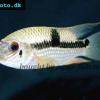 Acara
Acara  Yellow
Yellow  Patrick's
Patrick's  Blue
Blue  Green
Green 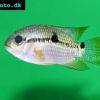 Acara
Acara  White
White  Compressed
Compressed 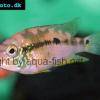 Pastel
Pastel  Midas
Midas  Red
Red  Bluemouth
Bluemouth  False
False 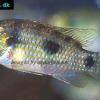 African
African  Agassiz's
Agassiz's  Banded
Banded 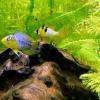 Yellow
Yellow  Cockatoo
Cockatoo  Blue
Blue  Blackstripe
Blackstripe  Highfin
Highfin  Redstripe
Redstripe  Threadfinned
Threadfinned  Macmaster’s
Macmaster’s 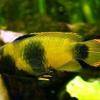 Panda
Panda  Norbert’s
Norbert’s 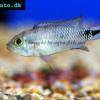 Blue
Blue  Thin-line
Thin-line  Three-striped
Three-striped  Viejita
Viejita 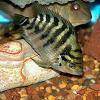 Flier
Flier  Archocentrus
Archocentrus  Convict
Convict  Seven
Seven  Spiny
Spiny  Oscar
Oscar  Sunshine
Sunshine  Chitande
Chitande  Firebird
Firebird  Midnight
Midnight  Lake
Lake  Sunshine
Sunshine  Aulonocara
Aulonocara  Nyasa
Nyasa 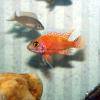 Ruby
Ruby  Grants
Grants  Aulonocranus
Aulonocranus  Chameleon
Chameleon  Benitochromis
Benitochromis  Orinoco
Orinoco  Yellow
Yellow 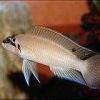 Brichard’s
Brichard’s  Guenther’s
Guenther’s  Southern
Southern  Cichla
Cichla 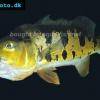 Peacock
Peacock  Chiseltooth
Chiseltooth  Bolivian
Bolivian  Red
Red  Many-pointed
Many-pointed  Red
Red  Three
Three 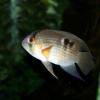 Keyhole
Keyhole  Azureus
Azureus  Red
Red  Jackson’s
Jackson’s  Crenicichla
Crenicichla  Honduran
Honduran  Blue-eye
Blue-eye  Afra
Afra 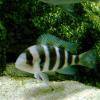 Frontosa
Frontosa  Slender
Slender  Malawi
Malawi  Chequerboard
Chequerboard  Checkerboard
Checkerboard  Malawi
Malawi  Ectodus
Ectodus  Tanganyika
Tanganyika  Canara
Canara  Green
Green  Rostratus
Rostratus  Pearl
Pearl 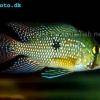 Geophagus
Geophagus  Yellowhump
Yellowhump  Suriname
Suriname  Redhump
Redhump  Red
Red  Dority’s
Dority’s  Argentine
Argentine 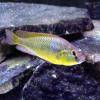 Burton’s
Burton’s  Victoria
Victoria 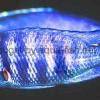 Haplochromis
Haplochromis  Jewel
Jewel  Banded
Banded 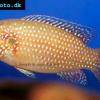 Lifalili
Lifalili  Lowland
Lowland  Texas
Texas  Pantano
Pantano  Severum
Severum  Banded
Banded 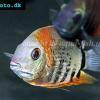 Severum
Severum  Rainbow
Rainbow  Parrot
Parrot  Chocolate
Chocolate  Brown
Brown  Marlieri
Marlieri  Golden
Golden  Striped
Striped  Masked
Masked 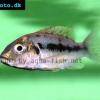 Konye
Konye  Blue
Blue  Trewavas
Trewavas  Electric
Electric  Dwarf
Dwarf  Redbreast
Redbreast  Lamprologus
Lamprologus  Gold
Gold 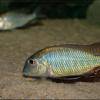 Greenface
Greenface 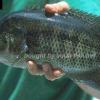 Mayan
Mayan  Aurora
Aurora  Blue
Blue  William’s
William’s 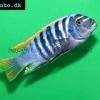 Zebra
Zebra  Malawi
Malawi  Blue
Blue 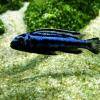 Blue
Blue  Mbuna
Mbuna  Parallel
Parallel  Purple
Purple  Flag
Flag  Bolivian
Bolivian  Ram
Ram  Basket
Basket 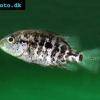 Haitian
Haitian  Zebra
Zebra  Striped
Striped  Neolamprologus
Neolamprologus  Brevis
Brevis  Fairy
Fairy 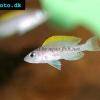 Neolamprologus
Neolamprologus  Cylindricus
Cylindricus  Hecq’s
Hecq’s  Neolamprologus
Neolamprologus  Lemon
Lemon  Mustax
Mustax  Daffodil
Daffodil  Six-bar
Six-bar  Five-bar
Five-bar  Marbled
Marbled 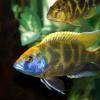 Giraffe
Giraffe  Blue
Blue  Sulphurhead
Sulphurhead  Wolf
Wolf  Jaguar
Jaguar  Blue
Blue  Marakeli
Marakeli  Madagascar
Madagascar  Pinstripe
Pinstripe  Pelmatochromis
Pelmatochromis  Kribensis
Kribensis 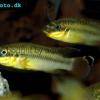 Striped
Striped  Red
Red  Deepwater
Deepwater  Fenestratus
Fenestratus  Nichols’
Nichols’  Southern
Southern  Bumble
Bumble  Demason’s
Demason’s  Slender
Slender  Red
Red  Mbuna
Mbuna  Malawi
Malawi  Kenyi
Kenyi  Powder
Powder  Altum
Altum  Angelfish
Angelfish  Angelfish
Angelfish 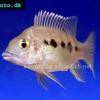 East
East  Juba
Juba  Earth
Earth 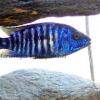 Electric
Electric  Azure
Azure  Lionhead
Lionhead  Discus
Discus  Blue
Blue  Red
Red  Zebra
Zebra  Brichard’s
Brichard’s  Blue
Blue  Firemouth
Firemouth  Zebra
Zebra  Yellow
Yellow  Blue
Blue  Dwarf
Dwarf  Blunthead
Blunthead 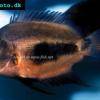 The
The  White
White  Twoband
Twoband  Fenestratus
Fenestratus  Window
Window  Tailbar
Tailbar  Black
Black  Redhead
Redhead 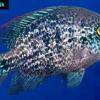 Oaxaca
Oaxaca  Xenotilapia
Xenotilapia